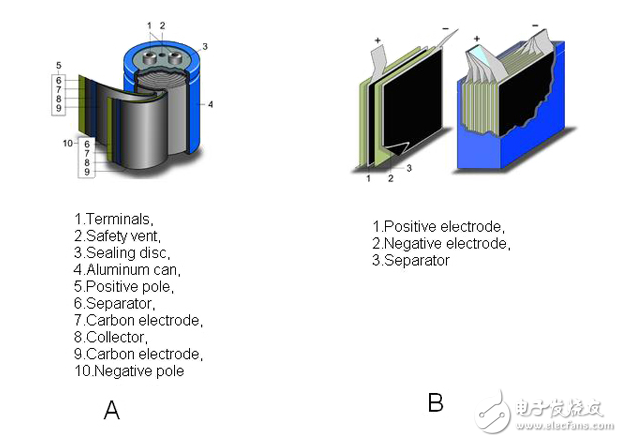
资料下载

超级电容器能量收集系统的选择
超级电容器能量收集系统的选择
低功耗微控制器在提高能量收集系统的寿命方面做了很多工作。巧妙的结构和使用的低功耗模式,让微画毫微安电流同时保存寄存器和配置数据。这使得设计者能够使用更小、更不密集的能量存储解决方案,而这些解决方案在过去是不可行的。
。然而,能源储存,这是环境能量收集系统的一个关键角色,仍然是在大多数情况下,电源缓冲储存足够的能量来提供动力爆发需要数据的采集和传输在需求高峰的需要,特别是如果数据将通过无线网络传输。这些能量存储设备一般采取的是电池或超级电容器(超级电容)的形式。
超级电容器,其中桥梁常规电容器和蓄电池之间的差距,提供适合的能量收集环境中的性能特点。超级电容器的电容值可以提供高达10000倍,传统的电解电容器。此外,在过去的超级电容器能提供关于化学电池的能量存储密度的10%,新的超级化学和结构产生更高密度的能源,可以充电比较快。

This article looks at supercap options available to engineers designing energy-harvesting solutions, with particular attention to insulated and sealed designs that must withstand environmental extremes or, unlike rechargeable battery technologies, cannot be replaced.
All parts, datasheets, tutorials, reference designs and development kits referenced here are available on Digi-Key’s website.
The essentials
The core elements of a supercapacitor are polarized electrodes that use an electrolyte as the conductive medium. This is different from electrolytic capacitors that use the electrolyte as a cathode terminal.
Supercapacitors can be wound or stacked like other capacitors or piles (Figure 1 left and right)。 Each electrode, electrolyte, electrode sandwich is in essence an Electrical Double Layer Capacitor (EDLC)。 Like any capacitor or battery, the capacity is directly proportional to the surface areas of the electrodes and electrolyte as well as the spacing between plates. Paralleling more surface area increases current and putting them in series increases voltage.
声明:本文内容及配图由入驻作者撰写或者入驻合作网站授权转载。文章观点仅代表作者本人,不代表电子发烧友网立场。文章及其配图仅供工程师学习之用,如有内容侵权或者其他违规问题,请联系本站处理。 举报投诉
- 相关下载
- 相关文章





